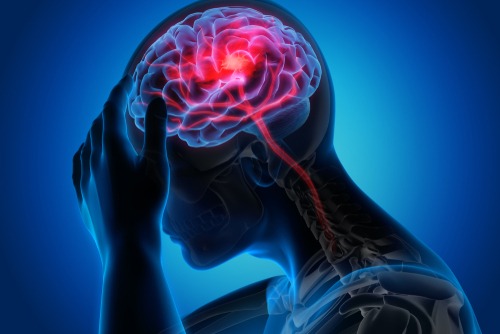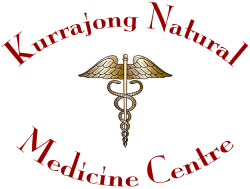Tension-Type Headache: A Chinese Medicine Perspective
What are Tension-Type Headaches (TTH)?
Patients with tension-type headaches suffer from episodes of pain that is typically bilateral, pressing or tightening in quality, of mild to moderate intensity, and which does not worsen with routine physical activity. There is no nausea, but fear of bright light or loud sounds may be present.
Infrequent headaches lasting minutes to days, which occur once per month or less often has limited impact on individuals. If headaches occur on more than one but fewer than 15 days per month, this is classified as frequent episodic tension-type headache. In some patients this can become chronic occuring on 15 or more days per month.
A headache should not be confused with a migraine, which is characterised by recurrent attacks of mostly one-sided, severe headache, although some patients suffer from both types of headaches. TTH is the most common type of primary headache and the disability attributable to it is larger worldwide than that due to migraine.

How Does Traditional Chinese Medicine (TCM) view Tension-type Headache ?
Every year the lives of many people throughout the world are affected by headaches. Tension-type headache is classified as episodic if it occurs on less than 15 days a month and as chronic if it occurs more often. Episodic headaches can be treated with rest and analgesics, while chronic headaches demands a more fundamental treatment.
A tension headache tends to be associated with negative stress, such as inability to cope with the number of tasks to be completed or other stress factors in one’s life. They fall into the “Internal Causes of Headaches” category in TCM and may be one of several underlying patterns including:
- Liver Fire,
- Liver Yang Rising,
- Liver Wind,
- Liver Qi Stagnation, and others.
The region on the head where the headache is experienced can provide an experienced TCM doctor with information as to which of the organs and acupuncture channels are affected.
The top of the head relates to the Liver channel and this type of headache is often due to deficient Liver-Blood. This type of headache will improve when lying down and will be dull in nature. Other TCM Patterns that elicit this type of headache are Liver Yang rising, the pain of which will be sharp nature. Additionally there are non Liver related headaches that are due to deficient Qi and Blood.
Headaches that occur on the side(s) of the head correspond to the Gall-Bladder channel and headaches here are most frequently due to Liver Yang, Liver-Fire or Liver-Wind rising. This is a sharp, throbbing headache.
Frontal headaches are due to Liver-Blood deficiency if the pain is dull, or Liver-Yang rising if the pain is sharp and severe.
Headaches can start on the back of the head/neck and will worsen by radiating over the top of the head. This is associated with the Bladder channel but will also have elements of Liver pattern involvement.
Tension-headaches are the most common type of headache and studies have shown these types of headaches to respond well to acupuncture and/or Chinese herbs.
It is important however that the pattern(s) causing the headache is clearly identified by a qualified TCM practitioner in order to provide effective treatment. It may be that several patterns are interacting and life-style factors may add to the symptom complex experienced by the patient.
At Kurrajong Natural Medicine Centre our team of highly experienced and qualified practitioners are ready to help. Simply call (02) 4573 0784 to discuss what approach is best for your issue.
How Does Traditional Chinese Medicine Treat Tension-type Headaches ?
Traditional Chinese Medicine (TCM) takes a holistic approach to treating headaches. According to TCM principles, headaches are often considered a result of an imbalance or blockage in the body’s energy flow, known as Qi (pronounced “chee”). TCM practitioners aim to restore balance and harmony to the body to alleviate headaches. Below are some common TCM treatment approaches:
-
Acupuncture: Acupuncture involves the insertion of thin needles into specific points on the body to regulate the flow of Qi. TCM theory suggests that stimulating specific acupuncture points can help relieve headaches by unblocking stagnant Qi and promoting a smooth energy flow. Acupuncture is often used as a standalone treatment or in conjunction with other TCM modalities.
-
Herbal remedies: TCM utilises various herbal formulations to address different types of headaches. The selection of herbs is based on an individual’s specific symptoms, constitution, and the underlying pattern of imbalance diagnosed by a TCM practitioner. Herbal remedies may be prescribed as teas, powders, pills, or tinctures and are aimed at restoring balance in the body. Examples of some of the Chinese herbs that may be used include:
-
Chrysanthemum (Ju Hua): Known for its cooling properties, chrysanthemum is often used to alleviate headaches caused by heat or excessive stress.
-
White Willow Bark (Bai Liu): Derived from the bark of the white willow tree, this herb contains salicin, which is converted to salicylic acid in the body. It has analgesic and anti-inflammatory effects and can help relieve headaches.
-
Lavender (Xun Yi Cao): Lavender is commonly used in Chinese medicine for its calming and soothing properties. It can help relieve tension and stress.
-
Peppermint (Bo He): Peppermint has a cooling effect and is often used to relieve headaches. It can help relax the muscles and improve blood circulation, providing pain relief.
-
Gastrodia Rhizome (Tian Ma): Gastrodia rhizome is traditionally used to alleviate headaches caused by wind, which is a concept in Chinese medicine associated with muscle tension and spasms. It has a calming effect on the liver and relieves pain.
-
Ligusticum Root (Chuan Xiong): Ligusticum root is commonly used in Chinese medicine for various types of headaches. It promotes blood circulation and alleviates pain, making it also useful in the treatment of migraines.
-
Angelica Root (Dang Gui): Angelica root is known for its blood-nourishing properties and is often used in Chinese medicine to alleviate headaches caused by blood deficiency or poor circulation.
-
Chinese Skullcap (Huang Qin): Chinese skullcap has anti-inflammatory and sedative properties. It is often used to relieve headaches caused by tension and inflammation.
-
-
Tui Na massage or Remedial massage: Tui Na is a form of therapeutic massage that involves applying pressure to specific points and manipulating muscles and soft tissues. Tui Na massage aims to promote the flow of Qi and blood, relax tense muscles, and relieve headaches caused by muscular tension or Qi stagnation.
-
Cupping therapy: Cupping involves creating suction on specific points or areas of the body using glass or plastic cups. The suction helps to increase blood flow, release muscle tension, and promote the movement of Qi. Cupping therapy is often used in conjunction with acupuncture to treat pain.
-
Dietary and lifestyle recommendations: TCM practitioners may provide advice on dietary adjustments and lifestyle modifications to help prevent and manage headaches. This may include recommendations to avoid certain foods that are believed to trigger headaches, adopt stress reduction techniques (such as meditation or qigong), ensure sufficient rest and sleep, and maintain a balanced and healthy lifestyle.
-
Qi Gong and Tai Chi: Qi Gong and Tai Chi are ancient Chinese practices that combine gentle movements, breathing exercises, and meditation. These practices aim to cultivate and balance the body’s Qi, promoting overall well-being and reducing stress, which can contribute to headaches.
What You Can Do to Help Yourself if You Suffer From Tension Headaches
According to the Mayo Clinic, a healthy lifestyle can promote good overall health and help prevent tension-type headaches. Here are the basics:
- Eat nutritious foods on a regular schedule.
- Exercise regularly.
- Get enough sleep.
- Avoid excess caffeine.
- Quit smoking.
Stress and tension often go hand in hand in causing headaches. To reduce stress, try these simple tips:
- Simplify your life.
- Take a break.
- Breath deeply in and out and count to 10.
- Think positive thoughts.
- Don’t worry about things you can’t control.
- Also see below under ‘Additional self-help measures…’
Tense muscles can trigger tension-type headaches. Apply heat or ice (which ever feels better to you) to relieve tense neck and shoulder muscles.
Massage also can relieve muscle tension — and sometimes headache pain. Gently massage your temples, scalp, neck and shoulders with your fingertips, or gently stretch your neck.
Take time to unwind every day. Try this deep-breathing exercise:
- Lie down on your back or sit comfortably with your feet flat on the floor; hands in your lap.
- Imagine yourself in a peaceful place, perhaps a beach or quiet forest. Keep this scene in your mind.
- Inhale and exhale slowly and deeply for at least 10 minutes.
- When you’re done, sit quietly for a minute or two.
Additional self-help measures you can take include:
- Manage stress: Stress is a common contributor to headaches. Explore stress management techniques that work for you, such as deep breathing exercises, meditation, yoga, progressive muscle relaxation, or engaging in hobbies and activities you enjoy.
- Identify triggers: Keep a diary to identify any specific triggers that may be contributing to your headaches. Common triggers include stress, poor posture, inadequate sleep, certain foods, and caffeine. Once you identify your triggers, try to avoid or manage them effectively.
- Improve your posture: Poor posture, especially when sitting for prolonged periods, can strain the muscles in your neck and head, leading to headaches. Be mindful of your posture and make an effort to sit and stand with your spine aligned properly. Take frequent breaks to stretch and move around if you have a desk job.
- Establish a regular sleep routine: Inadequate sleep or poor sleep quality can increase the likelihood of headaches. Aim for a consistent sleep schedule and create a relaxing bedtime routine. Ensure that your sleep environment is comfortable, dark, and quiet. If necessary, consider speaking to a healthcare professional about any sleep difficulties you may be experiencing.
- Apply heat or cold therapy: Applying a heating pad or a warm towel to the affected area can help relax tense muscles and relieve pain. Alternatively, some people find relief from using a cold pack or an ice pack wrapped in a thin cloth. Experiment with both heat and cold to see which provides you with more relief.
- Practice relaxation techniques: Engage in activities that promote relaxation, such as taking a warm bath, listening to calming music, or practicing deep breathing exercises. Relaxation techniques can help alleviate muscle tension and reduce intensity.
- Stay hydrated: Dehydration can contribute to headaches, so ensure you’re drinking enough water throughout the day. Aim for around eight glasses of water daily and limit your intake of caffeine and alcohol, as they can dehydrate you.
- Exercise regularly: Regular physical activity can help reduce stress and promote overall well-being. Engage in exercises that you enjoy, such as walking, swimming, or cycling. Start slowly and gradually increase the intensity and duration of your workouts.
- Massage and stretch: Gently massaging your neck, shoulders, and scalp can help relieve muscle tension. You can also incorporate stretching exercises into your routine, focusing on the muscles in your neck, shoulders, and upper back.
References
Linde, K., Allais, G., Brinkhaus, B., Fei, Y., Mehring, M., Shin, B. C., Vickers, A., & White, A. R. (2016). The Cochrane database of systematic reviews, 4, CD007587. https://doi.org/10.1002/14651858.CD007587.pub2
Coeytaux RR, Kaufman JS, Kaptchuk TJ, Chen W, Miller WC, Callahan LF, Mann JD. 2005 Oct;45(9):1113-23. doi: 10.1111/j.1526-4610.2005.00235.x. PMID: 16178942.
Marciocia, G. (1994) The Practice of Chinese Medicine: The Treatment of Disease with Acupuncture and Chinese Herbs, Edinburgh: Elsevier Churchill Livingstone.
Mayoclinic: Headaches: Self-care measures for relief https://bit.ly/46FO2C4
YanQing Tong, LiXiang Yu, and Ye Sun (2015) Evidence-Based Complementary and Alternative Medicine. https://doi.org/10.1155/2015/208492
Disclaimer
Disclaimer information for users of the Kurrajong Natural Medicine Centre, Namaste Yoga Kurrajong and The Herbal Health Coach website.
Page last updated: 24th June 2023
Information provided for education and research information only
The information on this website is presented by Kurrajong Natural Medicine Centre for the purpose of disseminating health information free of charge for the benefit of the public.
While Kurrajong Natural Medicine Centre has exercised due care in ensuring the accuracy of the material contained on this website, the information on the site is made available on the basis that Kurrajong Natural Medicine Centre is not providing professional advice on a particular matter.
This website is not a substitute for independent professional advice. Nothing contained in this site is intended to be used as medical advice and it is not intended to be used to diagnose, treat, cure or prevent any disease, nor should it be used for therapeutic purposes or as a substitute for your own health professional’s advice.
Kurrajong Natural Medicine Centre does not accept any liability for any injury, loss or damage incurred by use of or reliance on the information provided on this website.
Quality of information
Kurrajong Natural Medicine Centre makes every effort to ensure the quality of the information available on this website and updates the information regularly. Before relying on the information on this site, however, users should carefully evaluate its accuracy, currency, completeness and relevance for their purposes, and should obtain any appropriate professional advice relevant to their particular circumstances. Kurrajong Natural Medicine Centre cannot guarantee and assumes no legal liability or responsibility for the accuracy, currency, completeness or interpretation of the information.
The material may include the views or recommendations of third parties and does not necessarily reflect the views of Kurrajong Natural Medicine Centre or indicate a commitment to a particular course of action.
Links to other websites
This website contains links to other websites which are external to Kurrajong Natural Medicine Centre. Kurrajong Natural Medicine Centre takes reasonable care in selecting linking websites but Kurrajong Natural Medicine Centre accepts no responsibility for material contained in a website that is linked to this site. It is the responsibility of the user to make their own decisions about the accuracy, currency, reliability and correctness of information contained in linked external websites.
Links to external websites are provided for the user’s convenience and do not constitute an endorsement or a recommendation of any third party products or services offered by virtue of any information, material or content linked from or to this site. Users of links provided by this site are responsible for being aware of which organisation is hosting the site they visit.
Views or recommendations provided in linked sites may include the views or recommendations of third parties and do not necessarily reflect those of Kurrajong Natural Medicine Centre or indicate a commitment to a particular course of action. .



